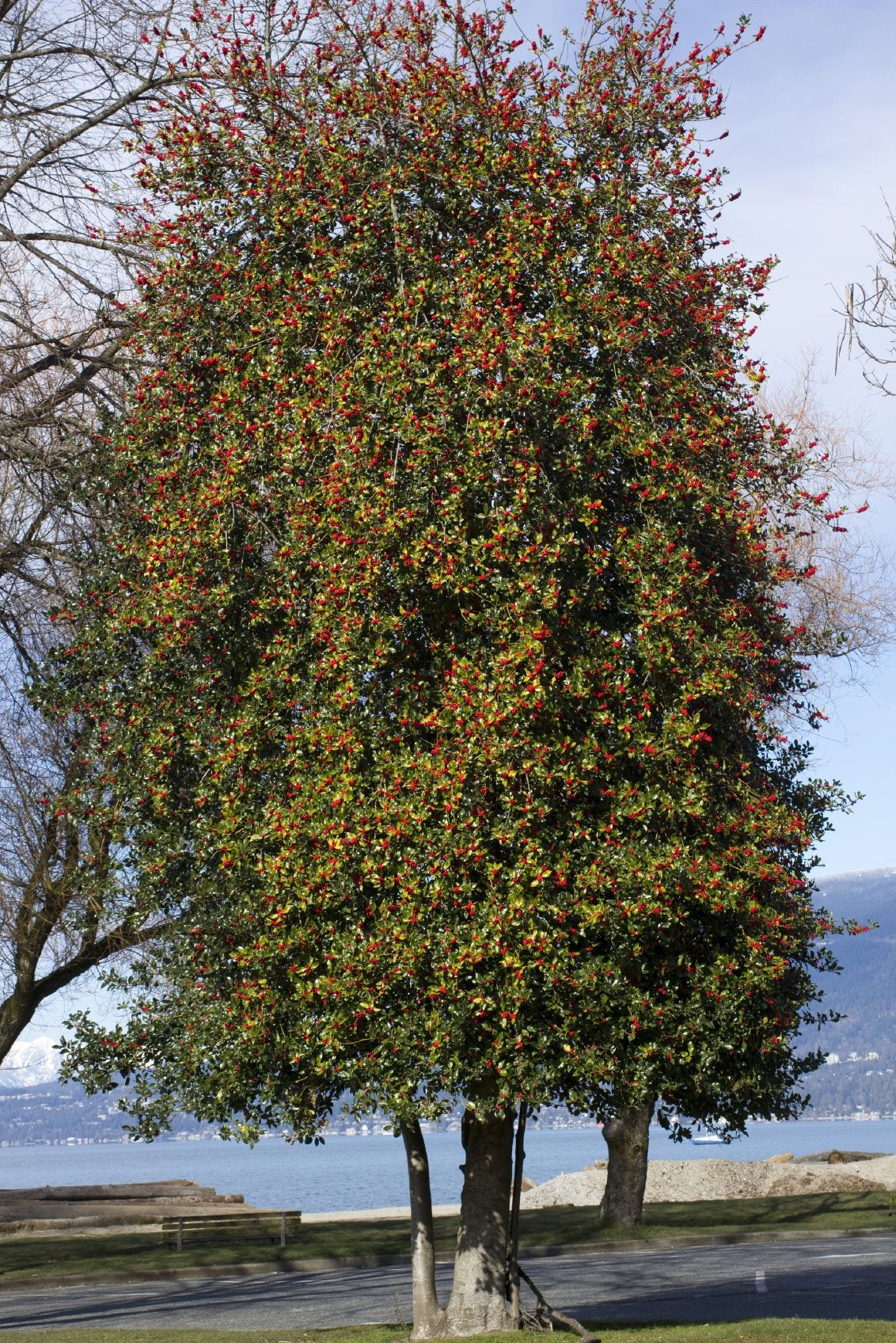American Holly Information: Tips On Growing American Holly Trees


Most of us are familiar with holly shrubs in the landscape and growing American holly trees (Ilex opaca) is a relatively easy endeavor. Read on to learn more about this holly species.
American Holly Information
These attractive, broad-leaf evergreen trees grow 15 to 50 feet (5-15 m.) tall. They are pyramidal in shape and are known for their striking red berries and deep green, leathery leaves with sharp points. American holly trees are terrific landscape plants. They are great for habitat too. The dense foliage provides cover for small critters and the berries provide food for many birds.
The most important note of American holly information is that these trees are dioecious, meaning these plants are either male or female. It is the female that produces the red berries. It typically takes five years or more to tell if you have a female. If you want the red berries (and most of us do), you need to buy an identified female from a nursery or plant at least four or five of them to increase your odds.
Growing American Holly Trees
American holly planting is easy as long as you choose containerized or balled and burlapped specimens. Do not plant bareroot trees. They usually fail. American holly trees can take all types of soil but prefer slightly acidic, good-draining, sandy soil.
American holly trees perform well in shade and full sun but prefer partial sun. These trees like regular and even moisture but they can also tolerate some flooding, occasional drought, and ocean salt spray. These are tough trees!
How to Care for American Holly
If you are wondering about American holly tree care, there really isn’t much to do. Make sure you plant them in an area that is protected from harsh, drying, winter winds. Keep their soil moist. Prune them only if they form irregular branches or if you want to shear them into a hedge. They do not succumb to many pests or diseases. They are somewhat slow growing at 12 to 24 inches (31-61 cm.) per year. So be patient. It is worth the wait!
Gardening tips, videos, info and more delivered right to your inbox!
Sign up for the Gardening Know How newsletter today and receive a free copy of our e-book "How to Grow Delicious Tomatoes".

Karen Boness is the founder of Wild Willow Design, an Australia-based company that specializes in ecological landscape design.
-
 Looking For Plants To Give You The Soft And Fuzzies? Try These 5 Fuzzy Leaf Plant Options
Looking For Plants To Give You The Soft And Fuzzies? Try These 5 Fuzzy Leaf Plant OptionsLovers of texture, drama, silver foliage and tactile plants will adore these special sensory garden additions. These fuzzy leaf plant options will leave you all aglow
By Susan Albert
-
 Get Ready For A Summer Of Hummers! Grow These Full Sun Hummingbird Plants and Flowers
Get Ready For A Summer Of Hummers! Grow These Full Sun Hummingbird Plants and FlowersIf you’re lucky enough to enjoy a sunny backyard, make sure you are maxing out on your pollinator opportunities and grow these full sun hummingbird plants and flowers
By Tonya Barnett